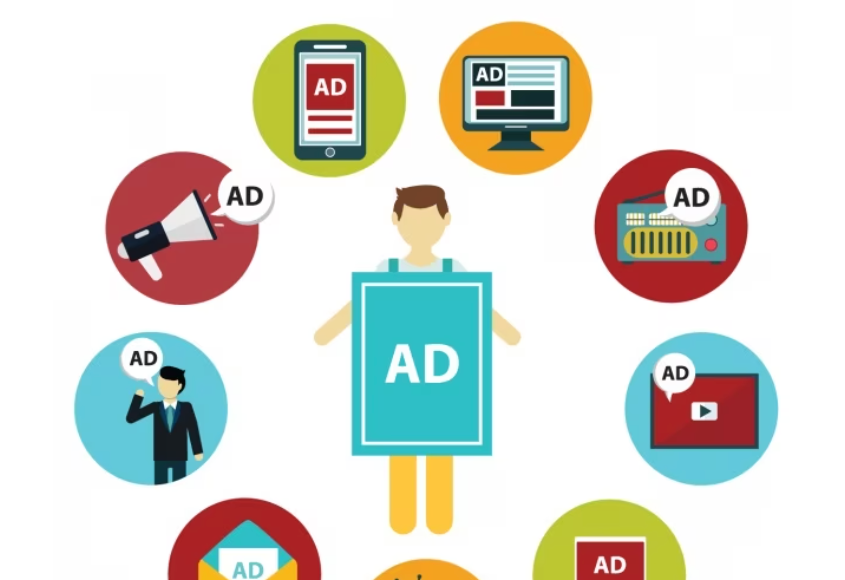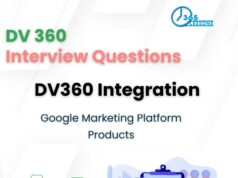1. What is brand safety and how does it work?
Brand safety refers to the measures and strategies put in place to ensure that a brand’s advertisements do not appear alongside content that could harm its reputation or violate its values. This includes avoiding association with inappropriate, offensive, or controversial content. Brand safety is typically managed through the use of keyword targeting, content categorization, and third-party verification tools that assess the suitability of the ad placement.
2. Why DV 360 over Google Ads?
DV 360 (DoubleClick Digital Marketing) is a more advanced and comprehensive tool than Google Ads. DV 360 is specifically designed for programmatic advertising, providing greater control over targeting, bidding, and ad placements across various channels. It offers more sophisticated features for audience segmentation, real-time bidding, and detailed campaign reporting, making it the preferred choice for advertisers with complex campaign requirements.
3. Name some stakeholders in the Programmatic Ecosystem:
Stakeholders in the programmatic ecosystem include advertisers, publishers, ad agencies, demand-side platforms (DSPs), supply-side platforms (SSPs), ad exchanges, and data management platforms (DMPs).
4. What is a click Macro?
A click macro is a tracking URL parameter used in digital advertising to capture information about user interactions, specifically clicks. It helps in recording data such as the click-through URL, timestamp, and other relevant information, aiding in campaign performance analysis and attribution.
5. How will you explain programmatic advertisement to a layman?
Programmatic advertising automates the buying of digital ads, using data and algorithms to target specific audiences in real-time. It streamlines the ad buying process, making it more efficient and precise, ensuring that ads are shown to the right people at the right time.
6. What if the 3rd party tags don’t have macros on them?
If third-party tags don’t have macros, tracking and collecting dynamic information may be limited. Macros allow for dynamic insertion of values like click-through URLs or timestamps. Without macros, tracking capabilities may be restricted, and detailed insights into campaign performance could be compromised.
7. Will DBM count an impression?
Yes, DBM (DoubleClick Bid Manager) counts an impression when an ad is successfully served to a user’s device, regardless of whether the user interacts with the ad. An impression is counted when the ad is loaded on a web page or within an app.
8. How do you implement pixels?
To implement pixels, you typically insert a small piece of code (pixel) into the HTML of a website or an ad creative. This code tracks user interactions, such as page views or conversions, and sends that data back to a tracking or analytics platform.
9. How do you know if the pixel is firing on the page?
You can use browser developer tools or third-party browser extensions to inspect the page and check if the pixel code is present and firing correctly. Additionally, analytics or tracking platforms often provide dashboards or logs that indicate when pixels are triggered.
10. What tools can you use to test a 3rd party tag and its landing page?
Tools such as Google Tag Assistant, browser developer tools, or third-party validation services can be used to test third-party tags. For landing pages, tools like Google PageSpeed Insights or browser extensions like Ghostery can help assess performance and identify potential issues.
11. You are running an open exchange campaign and have to send a screenshot to the client. How will you do that?
You can capture a screenshot of the open exchange campaign by using the print screen function on your computer or using a dedicated screenshot tool. Once captured, you can save the screenshot as an image file and send it to the client through email or another communication platform.
12. What creative format would you suggest to create brand awareness?
For brand awareness, visually engaging and immersive creative formats such as video ads, interactive display ads, or rich media ads are effective. These formats capture attention and convey the brand message in a memorable way.
13. What creative and ad formats are available in DV 360?
DV 360 supports various creative and ad formats, including display, video, native, and audio ads. It also allows for the creation of dynamic creative optimization (DCO) ads, which tailor content based on user behavior and characteristics.
14. Common targeting capabilities in DV 360:
DV 360 offers a range of targeting capabilities, including demographic targeting, contextual targeting, behavioral targeting, geographic targeting, and first-party data targeting. It also integrates with Google Audiences for more advanced targeting options.
15. Which audiences will you prefer for fashion: Google audience or 3rd party? And why?
The preference depends on campaign goals and available data. Google Audiences may offer valuable insights and targeting options, but third-party audiences could provide niche or specific fashion segments that align more closely with the campaign objectives.
16. How would you approach the client to use PMP deals, or RTB in layman’s term?
In layman’s terms, Private Marketplace (PMP) deals ensure exclusive access to premium ad inventory, like a VIP section, while Real-Time Bidding (RTB) is like an auction where advertisers bid in real-time for available ad space. Explaining this to a client involves emphasizing the benefits of targeted and premium placements (PMP) versus the dynamic and competitive nature of real-time auctions (RTB).
17. What is GDPR?
GDPR (General Data Protection Regulation) is a European Union regulation that protects the privacy and personal data of individuals. It sets guidelines for the collection, processing, and storage of personal information, giving individuals more control over how their data is used.
18. Can you explain what DoubleClick Digital 360 (DV 360) is and what it does?
DV 360 is a programmatic advertising platform that allows advertisers and agencies to plan, buy, and measure their digital marketing campaigns across various channels, including display, video, native, and audio. It provides advanced tools for audience targeting, bidding, and reporting.
19. How do you use data to inform your campaign strategy in DV 360?
Data is used in DV 360 to analyze audience behavior, identify trends, and optimize campaign performance. It informs decisions on targeting options, bid strategies, and creative optimization to ensure that the campaign reaches the right audience at the right time.
20. Can you walk us through your experience setting up and managing programmatic campaigns in DV 360?
In setting up programmatic campaigns in DV 360, I start by defining campaign goals, selecting targeting criteria, and creating compelling creatives. I leverage audience insights and data to inform targeting decisions, set bid strategies, and continuously optimize based on performance metrics.
21. How do you stay up-to-date with the latest industry trends and advancements in programmatic advertising?
Staying updated involves regular reading of industry publications, attending conferences, participating in webinars, and joining relevant online communities. Following key influencers and engaging with industry peers also contribute to staying informed.
22. Can you give an example of a particularly challenging campaign you managed in DV 360 and how you overcame it?
Discussing a challenging campaign involves outlining the specific issues faced, the strategies implemented to overcome them, and the ultimate success achieved. It could include challenges related to targeting, creative performance, or achieving campaign objectives.
23. How do you approach targeting and audience segmentation in your campaigns?
Targeting and audience segmentation involve understanding the target audience, leveraging available data, and using DV 360’s tools to create precise audience segments. I focus on aligning targeting strategies with campaign goals and regularly adjust based on performance data.
24. How do you measure and optimize campaign performance in DV 360?
I measure campaign performance through key metrics such as impressions, clicks, conversions, and viewability. Optimization involves adjusting bidding strategies, refining audience targeting, and tweaking creatives to maximize the campaign’s efficiency and effectiveness.
25. Can you discuss your experience with cross-device and cross-channel advertising in DV 360?
Cross-device and cross-channel advertising in DV 360 involves creating cohesive campaigns that reach users across different devices and channels seamlessly. This may include adjusting creatives for different screen sizes and utilizing multi-channel attribution models.
26. Can you explain the role of a DSP and how it fits into the programmatic advertising ecosystem?
A DSP (Demand-Side Platform) is a technology platform that allows advertisers to purchase and manage digital advertising space in an automated and data-driven manner. It connects to ad exchanges, facilitating real-time bidding and optimizing ad placements across various publishers.
27. How do you collaborate with other teams, such as creative and media planning, in executing successful programmatic campaigns?
Collaboration involves regular communication, sharing insights, and aligning campaign strategies with the creative and media planning teams. Coordination ensures that creatives are tailored to the target audience, and media planning aligns with overall campaign goals.
28. Can you explain how you would use custom audience segments in DV 360 to drive more targeted advertising?
Custom audience segments in DV 360 allow for precise targeting based on specific criteria. I would define custom segments based on demographic, behavioral, or contextual factors, tailoring campaigns to reach audiences with a high likelihood of engagement.
29. Can you discuss your experience with conversion tracking and how it informs your optimization decisions in DV 360?
Conversion tracking in DV 360 involves monitoring user actions after clicking on an ad. This data informs optimization decisions, allowing for adjustments to targeting, bidding, and creative elements to maximize the conversion rate.
30. Can you give an example of how you have used data and technology to drive efficiency and scale in a campaign?
Utilizing data and technology involves leveraging insights from previous campaigns to inform targeting decisions, implementing dynamic creative optimization (DCO) for personalized content, and using automated bidding strategies to efficiently scale campaigns based on performance.
31. Can you explain how you would set up and manage a private marketplace in DV 360?
Setting up a private marketplace in DV 360 involves negotiating deals with premium publishers, creating a private auction, and defining specific targeting criteria. Management includes monitoring performance, adjusting bids, and optimizing to ensure the desired ad placements.
32. Can you discuss your experience with integrating third-party data sources into a campaign in DV 360?
Integrating third-party data in DV 360 involves importing external data sources, such as DMPs or CRM data, to enhance audience targeting. Experience in this area would include ensuring data accuracy, compliance with privacy regulations, and optimizing based on the integrated data.
33. Can you give an example of how you have used machine learning to optimize campaign performance in DV 360?
Machine learning in DV 360 can be applied for automated bidding, audience segmentation, and creative optimization. An example might involve using machine learning algorithms to analyze user behavior and adjust bidding strategies in real-time for better performance.
34. Can you explain the role of viewability and how you measure and optimize for it in your campaigns?
Viewability measures whether an ad is actually seen by users. In DV 360, viewability metrics help assess the effectiveness of ad placements. Optimization involves adjusting bidding and targeting strategies to prioritize placements with higher viewability.
35. Can you discuss your experience with cross-device attribution in DV 360 and how it informs your campaign strategy?
Cross-device attribution in DV 360 involves understanding how users interact with ads across multiple devices before converting. This insight informs strategy by attributing value to each touchpoint, helping optimize targeting and messaging for cross-device campaigns.
36. Can you give an example of how you have used audience insights and data to inform creative development in a campaign?
Utilizing audience insights involves understanding the preferences and behaviors of the target audience. This information can shape creative development by tailoring messaging, imagery, and formats to resonate with the specific interests and characteristics of the audience.
37. Can you explain how you approach data privacy and security in your campaigns and how you stay up-to-date with industry regulations?
Approaching data privacy involves adhering to industry regulations like GDPR, obtaining user consent, and employing secure data storage practices. Staying up-to-date involves continuous monitoring of regulatory changes, attending industry seminars, and collaborating with legal teams to ensure compliance.








